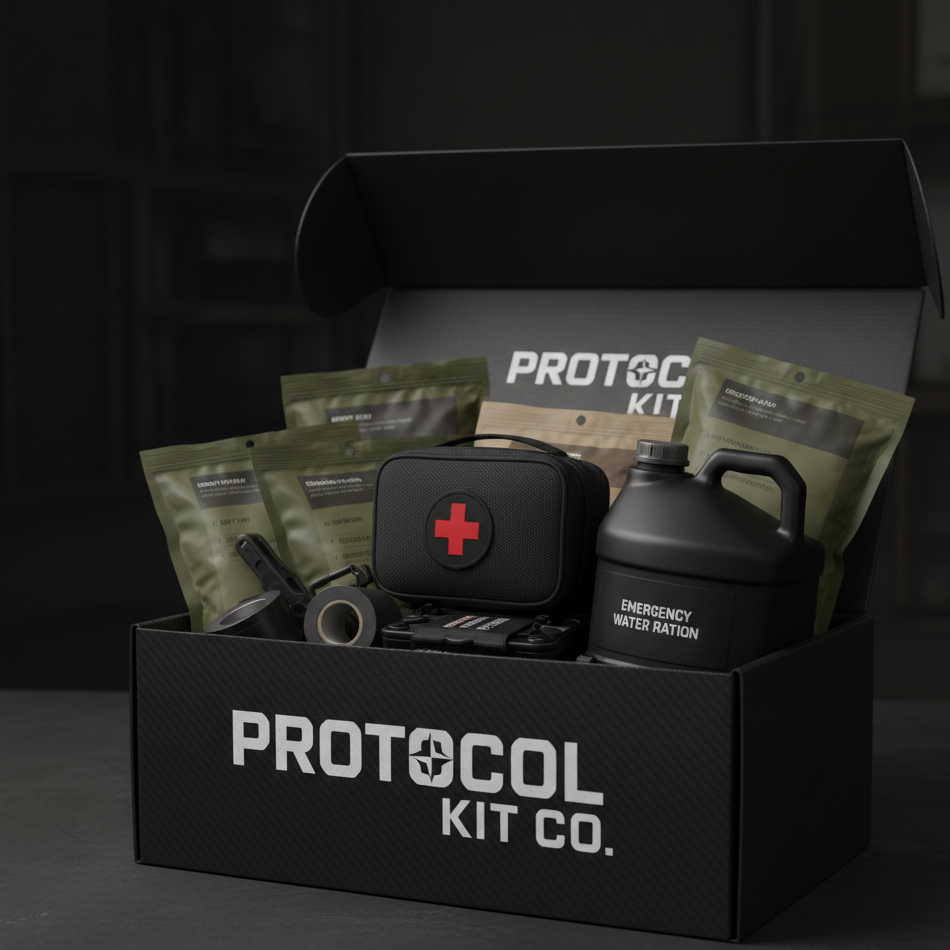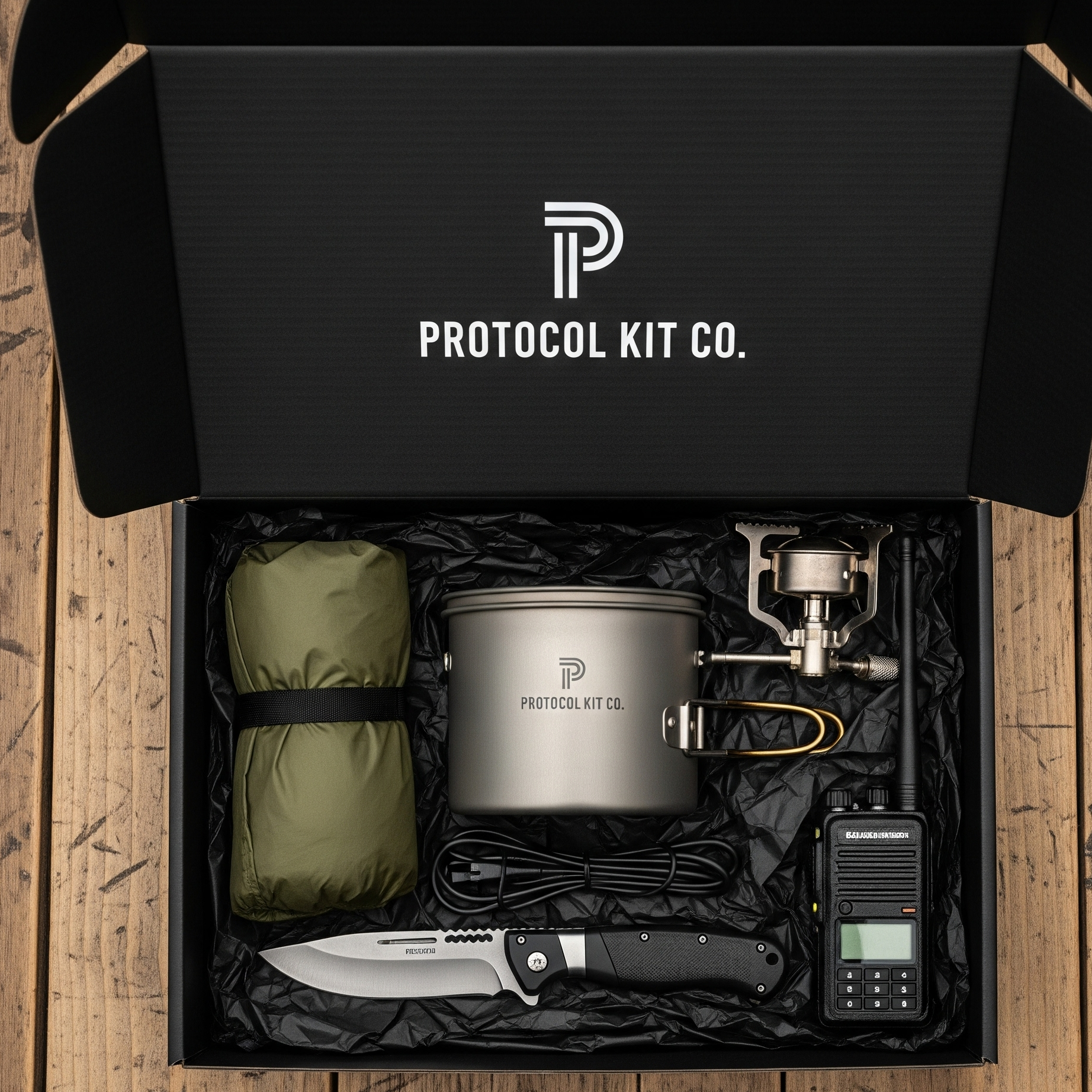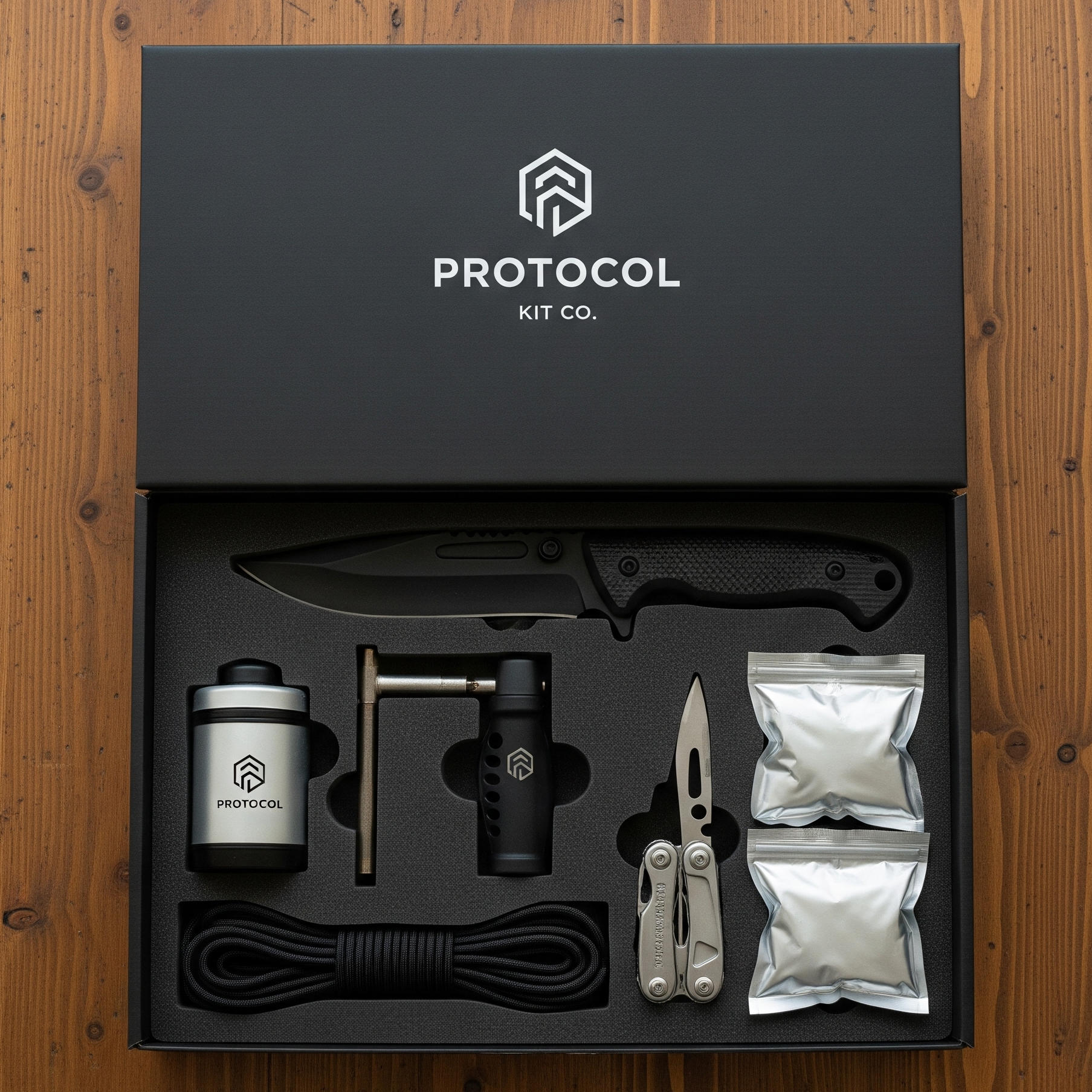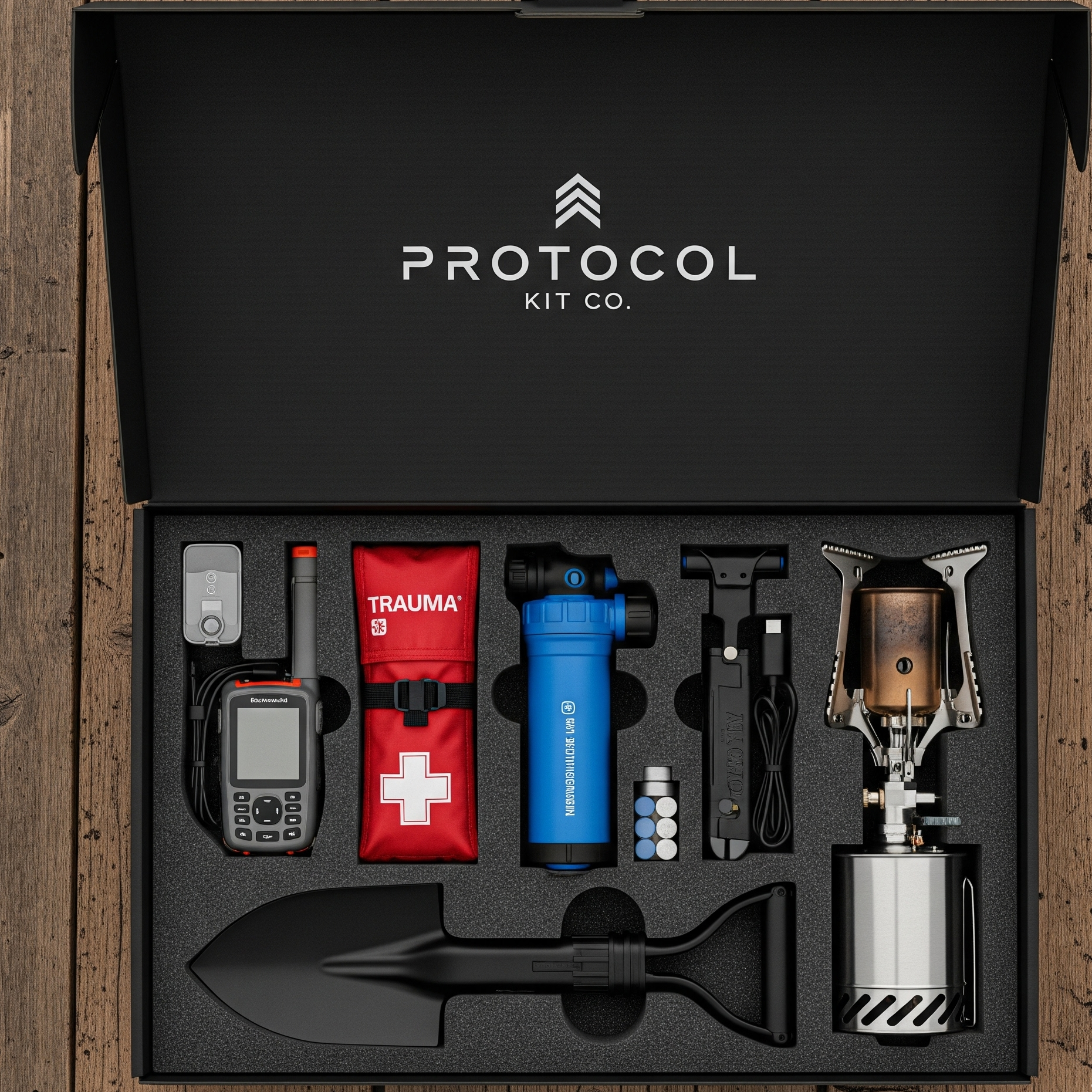Can You Drink Pool Water in an Emergency? A Survival Guide
When disaster strikes—be it a hurricane, earthquake, flood, or grid-down scenario—the veneer of modern infrastructure can vanish in an instant. Access to clean, safe drinking water, a resource often taken for granted, becomes the most critical factor for survival. While many preparedness plans focus on a 72-hour supply, major events can disrupt municipal water services for weeks, not days, leaving families to fend for themselves.1 This reality forces us to confront uncomfortable questions. Where can water be found when the taps run dry? How can it be made safe to drink? And in a moment of true desperation, with a backyard swimming pool shimmering like an oasis, can you actually drink pool water in an emergency?
The aftermath of natural disasters is often accompanied by a surge in waterborne diseases, a direct consequence of contaminated water sources and failing sanitation systems.3 This guide provides a definitive, evidence-based framework for navigating a water crisis. It cuts through common myths and dangerous misinformation to deliver actionable strategies grounded in the recommendations of leading public health and emergency management authorities, including the Centers for Disease Control and Prevention (CDC), the Environmental Protection Agency (EPA), and the Federal Emergency Management Agency (FEMA). This report will equip you with the knowledge to identify safe and unsafe water sources, master various purification methods, and ultimately, build a resilient water plan for your family's survival.
The Pool Water Dilemma: A Last Resort with Serious Hidden Dangers
In the preparedness community, a swimming pool is often viewed as a tremendous asset—a reservoir containing thousands of gallons of water.5 The logic seems simple: if you're dying of thirst, it's better than nothing. However, this simplistic view overlooks a complex chemical reality. While the answer to "can you drink pool water?" is a highly cautious "yes, but only as an absolute last resort and only with advanced purification," official health bodies are far more direct. Authorities like the Washington State Department of Health and the San Francisco Public Utilities Commission explicitly advise against drinking water from swimming pools and spas due to the high concentration of chemicals that are not intended for human consumption.7
Beyond Chlorine: The Invisible Threats in Pool Water
The primary danger of drinking pool water is not the chlorine itself, which is volatile and can be removed with relative ease. The more significant threats are the non-volatile chemical additives and chlorine-resistant pathogens that remain.
Pathogens - The Biological Risk
While chlorine is an effective disinfectant, it is not infallible. The CDC warns that certain germs can survive even in properly treated water. The most notable of these is Cryptosporidium, a microscopic parasite that causes a severe diarrheal illness called cryptosporidiosis.12 This parasite is protected by a tough outer shell, allowing it to survive for more than seven days in chlorinated water and making it highly resistant to standard chemical disinfection.12 A single diarrheal incident in a pool can release millions of these germs, posing a significant risk to anyone who swallows the contaminated water.12
Chlorine Poisoning - The Acute Chemical Risk
The chlorine level in a well-maintained pool is typically kept between 2.0 and 4.0 parts per million (ppm), which is within the CDC's maximum safe limit of 4 ppm for drinking water.5 However, in an emergency, one cannot assume a pool is perfectly maintained. A pool that has been recently "shocked" can have chlorine levels far exceeding safe limits.5 Ingesting water with such high concentrations can lead to chlorine poisoning, a serious medical condition with symptoms including burning in the mouth and throat, stomach pain, vomiting, and difficulty breathing.15 If chlorine poisoning is suspected, medical attention should be sought immediately, and the National Capital Poison Center can be contacted at 800-222-1222 for guidance.15
The Overlooked Danger: Cyanuric Acid (CYA) and Other Additives
The most insidious and commonly overlooked danger in pool water is cyanuric acid (CYA). Often sold as a "chlorine stabilizer" or "conditioner," CYA is added to almost every outdoor pool to protect chlorine from being broken down by the sun's ultraviolet rays.5 Unlike chlorine, CYA is not volatile; it does not evaporate or dissipate over time, even with boiling.5 As more stabilized chlorine tablets are added to a pool, the CYA concentration builds up.
While studies show that most ingested CYA is excreted from the body within 24 hours at low concentrations, animal studies indicate that high doses can lead to kidney damage and the formation of bladder calculi.18 Furthermore, high levels of CYA create a condition known as "chlorine lock," where the stabilizer binds to so much of the free chlorine that it renders the disinfectant ineffective against pathogens.14 This creates a dual threat: the water contains a potentially harmful chemical (CYA) while also failing to be properly sanitized, increasing the risk of waterborne illnesses from pathogens like Cryptosporidium.20 Beyond CYA, pools may also contain other chemicals unsafe for consumption, such as algaecides, fungicides, pH balancers, and clarifiers.6
How to Make Pool Water Drinkable (A High-Risk, Last-Resort Guide)
Treating pool water for consumption should only be attempted when all other safer water sources have been exhausted. It is a multi-step process that requires more than simple boiling or chemical treatment.
-
Step 1: Dechlorination (The Easy Part). The free chlorine in pool water can be removed relatively easily. The simplest method is to let the water sit in an open container exposed to direct sunlight for 24-48 hours, which will allow the chlorine to dissipate as a gas.5 Boiling the water will also speed up this process.5 For a faster chemical approach, a small amount of Vitamin C (ascorbic acid) can be added to the water to neutralize the chlorine.5
-
Step 2: Removing Chemical Contaminants (The Hard Part). This is the most critical and difficult step. It must be understood that boiling, standard carbon filters (like pitcher filters), and chemical disinfection (bleach or iodine) WILL NOT remove cyanuric acid, salts, heavy metals, or other dissolved chemical additives.24 Attempting to drink pool water treated only by these methods still exposes a person to the risks associated with these contaminants. The only two methods reliable for removing these dissolved solids are distillation and reverse osmosis.
-
Distillation: This process involves boiling the water to create steam and then collecting the condensed vapor. Because chemicals like CYA and salts are not volatile, they are left behind in the boiling vessel, resulting in purified water.7 Solar stills can be constructed for this purpose, or countertop distillers can be used if power is available.
-
Reverse Osmosis (RO): An RO filtration system uses high pressure to force water through a semi-permeable membrane with microscopic pores. This membrane blocks dissolved solids, including salts and chemicals like CYA, allowing only pure water molecules to pass through.5 Portable RO systems, some of which are hand-powered, are available for emergency preparedness.
-
-
Step 3: Final Disinfection. After the water has been purified via distillation or reverse osmosis, it should be treated as a final precaution against any potential re-contamination. This can be done by bringing the water to a rolling boil for one minute or by adding a small, appropriate dose of unscented household bleach.29
Look at ways to store and treat water more in depth.
The complexity and equipment required to safely purify pool water underscore why it is considered a source of last resort. The widespread but dangerously incomplete advice to simply "boil pool water" or "let the chlorine evaporate" fails to address the persistent chemical threat of CYA. Acknowledging this gap in common knowledge and providing a scientifically grounded, multi-step solution is essential for true emergency preparedness.
Your Home's Hidden Reservoirs: Finding Safe Water Sources in an Emergency
Before venturing outside or attempting to treat high-risk sources like pool water, a thorough inventory of your own home can reveal numerous sources of safer, more accessible water. The first rule of a water emergency is to start with what you already have, prioritizing the cleanest sources first. While the gold standard is a pre-stocked supply of commercially bottled water, several other "hidden" reservoirs exist within the typical residence.
The Safest Untapped Sources (Minimal Treatment Needed)
These sources contain potable water from your municipal supply and, if accessed correctly, pose the lowest risk of contamination.
-
Your Hot Water Heater (30-80 Gallons): The tank of a standard water heater holds a significant supply of safe, drinkable water.33 To access it safely after a disaster, follow these crucial steps:
-
Turn off the power supply. For an electric heater, switch off the corresponding breaker in your electrical panel. For a gas heater, turn the control knob to the "PILOT" setting.33 This prevents the heating elements from burning out in an empty tank.
-
Shut off the cold-water intake. Locate the valve on the cold-water pipe entering the top of the tank and turn it clockwise until it stops. This isolates the clean water in the tank from a potentially contaminated municipal supply.34
-
Open a hot water faucet. Turn on any hot water faucet in your house, preferably on an upper floor. This allows air to enter the plumbing system, breaking the vacuum and allowing the tank to drain.33
-
Drain the water. Connect a clean, food-grade hose to the drain valve at the bottom of the tank and collect the water in a clean container.11 The water may be hot and contain some sediment, so caution is advised. As a precaution, this water should be purified before drinking.
-
-
Water in Your Pipes (A Few Gallons): The plumbing throughout your home holds several gallons of water. To access it, first shut off the main water valve to your house to prevent contaminants from entering.33 Then, open the highest faucet in your home to let air in, and collect water from the lowest faucet.9
-
Ice Cubes: Melted ice cubes are a source of clean water, provided they were frozen before any contamination event occurred.7 Freezing does not kill bacteria, so do not attempt to freeze contaminated water.39
Sources Requiring Caution and Treatment
These sources can be used for drinking but must be purified first to eliminate potential pathogens.
-
Toilet Tanks (NOT the Bowl): The water in the upper tank of a toilet is the same clean water that supplies your faucets. It is a viable emergency source, but with a critical caveat: it is only safe if no chemical "in-tank" bowl cleaners are used, as these often contain toxic chemicals.10 This water must be filtered and disinfected before consumption.
-
Canned Goods: The liquid from canned fruits and vegetables is a safe and often overlooked source of hydration that also provides valuable nutrients.7
Unsafe Indoor Sources to AVOID at All Costs
Certain water sources within the home are dangerously contaminated with chemicals and should never be used for drinking, even after treatment.
-
Waterbeds: The water in waterbeds contains fungicides and other chemicals to prevent algae growth, as well as potential plasticizers leached from the vinyl liner.7
-
Radiators and Home Heating System Boilers: These are closed-loop systems containing water that is not intended for consumption. The water often contains rust, sludge, and toxic chemicals like antifreeze.7
-
Swimming Pools and Spas: As detailed in the previous section, these sources contain a complex mixture of disinfectants, stabilizers, algaecides, and other chemicals that make them unsafe for drinking without advanced purification.7
In a high-stress emergency, having a clear, quick-reference guide can prevent a life-threatening mistake. The following table summarizes the potential water sources within a home, allowing for rapid assessment and prioritization.
| Source | Estimated Volume | Safety/Purity Level | Required Action |
| Commercially Bottled Water | As stored | Potable | None; use first. |
| Water Heater Tank | 30-80 gallons | Generally Potable | Follow shut-off procedure; purify as a precaution. |
| Water Pipes | 1-5 gallons | Generally Potable | Follow gravity-drain procedure; purify as a precaution. |
| Ice Cubes | Variable | Potable | Melt and use. |
| Toilet Tank (No Chemicals) | 1-3 gallons per toilet | Requires Purification | Filter and disinfect (boil or use bleach). |
| Canned Fruits/Vegetables | Variable | Potable | None; use as needed. |
| Swimming Pool / Spa | 1,000s of gallons | DANGEROUS | Last resort only. Requires distillation or reverse osmosis. |
| Waterbed | 100s of gallons | DANGEROUS - DO NOT DRINK | Contains toxic fungicides and chemicals. |
| Heating System Boiler/Radiator | Variable | DANGEROUS - DO NOT DRINK | Contains toxic antifreeze, rust, and chemicals. |
How to Purify Water in an Emergency: A Master Guide to Safe Hydration
The foundational principle of emergency water safety is to treat all water of uncertain quality before using it for drinking, cooking, making ice, washing dishes, or brushing teeth.7 Unless it comes from a sealed commercial bottle, any water collected during a disaster—whether from a tap, a river, or a rainwater barrel—must be considered potentially contaminated with pathogenic microorganisms.
Before any disinfection method is applied, a universal first step for cloudy or turbid water is pre-filtration. Disinfection is less effective when microbes can hide within suspended particles of dirt or debris. The simplest way to clarify water is to let it sit undisturbed for several hours to allow sediment to settle, then carefully pour off the clearer water from the top. For faster results, strain the water through a clean cloth, paper towel, or coffee filter.29
Method 1: Boiling (The Gold Standard for Pathogen Removal)
Boiling is the surest and most effective method for killing or inactivating all common types of disease-causing organisms, including viruses, bacteria, and protozoa like Giardia and Cryptosporidium.29 The heat damages the structural components of these microbes, rendering them harmless.
Step-by-Step Guide to Boiling Water
-
After pre-filtering if necessary, bring the clear water to a vigorous, rolling boil for one full minute.9
-
At altitudes above 6,500 feet (approximately 2,000 meters), where water boils at a lower temperature, extend the boiling time to three minutes to ensure complete disinfection.29
-
Let the water cool naturally without adding ice. Store it in a clean, sanitized container with a tight cover.30
-
To improve the flat taste of boiled water, you can re-aerate it by pouring it back and forth between two clean containers or by adding a small pinch of salt to each quart or liter.29
Critical Limitation: Boiling is exceptionally effective against biological threats but is completely ineffective against chemical contaminants. It will not remove heavy metals, salts, pesticides, or other dissolved chemicals.9 In fact, prolonged boiling can concentrate some of these contaminants as the water evaporates.
Method 2: Chemical Disinfection (When Boiling Isn't an Option)
When fuel or a heat source is unavailable, chemical disinfection is a viable alternative for killing most viruses and bacteria.
Using Household Bleach
-
Select the Right Bleach: This is a critical safety step. Use only regular, unscented liquid household chlorine bleach. The label should indicate it contains 5.25% to 8.25% sodium hypochlorite as the active ingredient. DO NOT use scented bleaches, "color-safe" bleaches, or bleaches with added cleaners or thickeners.7
-
Dosage and Application: For clear water, add the appropriate amount of bleach using a clean medicine dropper. Stir the mixture and let it stand for at least 30 minutes before use. If the water is cloudy, colored, or very cold, double the amount of bleach.29
-
The Safety Check: After 30 minutes, the water should have a slight chlorine odor. If it does not, repeat the dosage and let it stand for another 15 minutes. If the water still does not smell of chlorine after the second dose, it is considered too contaminated to be made safe by this method and should be discarded.7
| Volume of Water | 6% Bleach Dosage | 8.25% Bleach Dosage |
| 1 Quart / Liter | 2 drops | 2 drops |
| 1 Gallon | 8 drops | 6 drops |
| 5 Gallons | 1/2 teaspoon | A little less than 1/2 tsp |
(Dosage based on EPA and CDC guidelines for clear water. Double the amount for cloudy water).29
Using Iodine and Tablets
-
Tincture of Iodine: Add five drops of 2% tincture of iodine to each quart of clear water (10 drops if cloudy), stir, and let stand for at least 30 minutes.29
-
Purification Tablets: Commercially available tablets containing chlorine, iodine, or chlorine dioxide can be used. It is essential to follow the manufacturer's instructions, as strengths vary.29
Critical Limitations: Standard chlorination and iodine treatments are not consistently effective against the hardy cysts of protozoa like Cryptosporidium and Giardia.13 Chlorine dioxide tablets are more effective against these parasites but require strict adherence to instructions.46 Additionally, iodine should not be used by pregnant women, individuals with thyroid conditions, or for more than a few weeks at a time.45
Method 3: Filtration (A Comparative Guide to Technologies)
Mechanical filtration works by physically blocking contaminants as water passes through a porous material. It is crucial to understand the difference between a water filter and a water purifier. Generally, a filter is designed to remove bacteria and protozoa, while a purifier also eliminates or deactivates viruses.25 This distinction can be life-or-death in a situation where water may be contaminated with human sewage, a common source of viruses like Hepatitis A and Norovirus.
-
Straw and Bottle Filters: These are highly portable filters designed for individual use. They excel at removing bacteria (like E. coli, Salmonella) and protozoa (Giardia, Cryptosporidium).55 Their main drawbacks are that they typically do not remove viruses or chemicals and are not suitable for filtering large quantities of water for storage or group use.54
-
Pump Filters: These manually operated devices are good for small groups, allowing users to filter larger volumes of water into clean containers. They are effective against bacteria and protozoa, though most standard models do not remove viruses unless specifically designed as a "purifier".55 They require physical effort and can be prone to clogging and mechanical failure.55
-
Gravity Filters: These systems, often consisting of two stacked containers, use gravity to pull water through one or more filter elements. High-quality gravity purifiers can remove not only bacteria and protozoa but also viruses, and often include activated carbon elements that reduce some chemicals, pesticides, and heavy metals, improving taste and odor.25 They are ideal for a family or group in a stationary location as they require no power and can process large volumes of water, but they are too bulky for portable use.55
-
Reverse Osmosis (RO) and Distillation: These are purification methods, not just filtration. As discussed previously, they are the most comprehensive systems, capable of removing nearly all contaminants, including viruses, dissolved chemicals, salts, and heavy metals.7 Their primary disadvantages in an emergency are their slow processing speed and high energy requirements (electricity or fuel for boiling).23
Method 4: UV and Solar Disinfection
-
UV Purifiers: These portable, battery-powered devices use ultraviolet light to scramble the DNA of microbes, rendering them unable to reproduce and cause disease. UV is effective against bacteria, viruses, and protozoa.45 Its major limitation is that it only works on clear water; any turbidity can shield pathogens from the light. Therefore, water must be pre-filtered before UV treatment.45
-
Solar Disinfection (SODIS): This is a simple, low-tech method for disinfecting small volumes of clear water. The process involves filling clean, clear plastic (PET) bottles with water and placing them in direct sunlight for at least 6 hours on a sunny day, or for 2 days if it is cloudy.46 The sun's UV-A radiation disinfects the water. Like UV purifiers, SODIS is only effective on clear, non-turbid water.46
The optimal purification strategy is often a multi-barrier approach, such as filtering water to remove protozoa and sediment, followed by chemical or UV disinfection to kill any remaining bacteria and viruses.30 This layered defense provides the most comprehensive protection against the wide array of potential contaminants.
| Method | Removes Bacteria | Removes Viruses | Removes Protozoa | Removes Chemicals/Salts | Key Advantages | Key Disadvantages |
| Boiling | Yes | Yes | Yes | No | Most reliable for killing all pathogens. | Requires fuel; does not remove chemicals; tastes flat. |
| Bleach (Chlorine) | Yes | Yes | No (Less effective) | No | Cheap, accessible, effective against viruses. | Ineffective against Cryptosporidium; requires precise measurement; taste. |
| Iodine | Yes | Yes | No (Less effective) | No | Lightweight tablets, effective against viruses. | Health risks for some; bad taste; ineffective against Cryptosporidium. |
| Straw/Bottle Filter | Yes | No | Yes | No | Highly portable, lightweight, easy for individual use. | Does not remove viruses or chemicals; low capacity. |
| Gravity Purifier | Yes | Yes (most high-end) | Yes | Some | High capacity, no power needed, improves taste. | Bulky, not portable, higher initial cost. |
| UV Purifier | Yes | Yes | Yes | No | Fast, effective against all pathogens, no chemicals. | Requires clear water and a power source (batteries). |
| RO / Distillation | Yes | Yes | Yes | Yes | Highest purity; removes nearly all contaminants. | Slow, energy-intensive, expensive, may produce waste water. |
Conclusion: From Knowledge to Action - Building Your Water Resilience Plan
Navigating a water crisis is one of the most fundamental challenges of emergency preparedness. The information presented demonstrates that ensuring a safe water supply is a nuanced task, requiring more than just a simple filter or a few stored jugs. The common wisdom to "just boil pool water" is dangerously incomplete, failing to account for persistent chemical contaminants like cyanuric acid that require advanced purification. Similarly, understanding the crucial distinction between a water filter and a water purifier can mean the difference between perceived safety and actual protection from viral pathogens.
The most resilient emergency water plan is one built on layers of redundancy and a clear understanding of the hierarchy of water sources and purification methods.
Key Takeaways for Immediate Action:
-
Store Abundantly: Your first line of defense is stored water. Aim for a minimum of one gallon per person, per day, for at least two weeks. Commercially bottled water is the safest and easiest option.2
-
Know Your Home: Before looking elsewhere, learn to safely access the "hidden" reservoirs in your home. Prioritize your hot water heater and plumbing system, as they contain dozens of gallons of potable water.11
-
Treat Pool Water as a Last Resort: A swimming pool is a source of last resort, not a primary supply. Its water is chemically complex and requires either distillation or reverse osmosis for safe consumption. Simple boiling or filtration is insufficient and potentially dangerous.7
-
Boiling is Best for Pathogens: For any water source of uncertain biological quality, boiling is the most reliable method to kill all classes of disease-causing organisms.29
-
Match the Method to the Threat: No single purification method is perfect for all situations. A robust plan includes multiple options. A high-quality gravity purifier can serve a family at home, while portable filters and chemical tablets are essential for evacuation scenarios.
Your Water Resilience Checklist:
-
Purchase and Store Water: Immediately begin building a two-week supply of bottled water. Store it in a cool, dark, accessible location.31
-
Assemble a Purification Kit: Your kit should include multiple options: unscented household bleach with a medicine dropper, water purification tablets, and a reliable mechanical filter or purifier appropriate for your family's needs.30
-
Conduct a Dry Run: Practice shutting off your home's main water valve. Learn how to safely drain water from your hot water heater. Familiarity with these procedures before a crisis is invaluable.35
True preparedness is not about fear; it is about empowerment. By taking these concrete steps, you transform knowledge into action, building a foundation of self-reliance that provides the ultimate peace of mind in an uncertain world.





